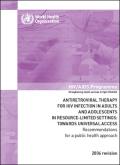Publications on Adolescents
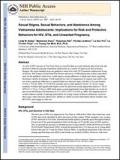
Resource | Publications,
As rates of HIV increase in Viet Nam, there is a need for data on social relations and sexual risk and protective behaviors among Vietnamese adolescents in a context of rapid social and economic changes. We report findings from our qualitative interviews with 159 Vietnamese adolescents living in Ha Noi, Nha Trang City and Ninh Hoa District and survey of 886 adolescents in these same three sites. In the qualitative interviews, youth report a strong adherence to ideals and values regarding abstinence outside of marriage.

Resource | Fact Sheets,
The population of Democratic People's Republic of Korea is estimated at 22.7 million with a growth rate of 0.54%. More than 60% of the total population is urban. The total fertility rate which was above the replacement level of fertility in 1990 had reduced to 2.0 in 1999. The crude birth rate of the country is 16.7 and crude death rate 9.9. DPR Korea has 100% literacy rate for both men and women.

Resource | Publications,
The Clinton Foundation HIV/AIDS Initiative (CHAI) is committed to supporting the government of Cambodia to expand pediatric HIV/AIDS care in Cambodia as outlined in the Memorandum of Understanding between CHAI and the Ministry of Health. This concept paper is a first step to try and achieve that goal.
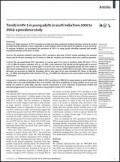
Resource | Publications,
Major increases in HIV-1 prevalence in India have been predicted. Incident infections need to be tracked to understand the epidemic’s course, especially in some southern states of India where the epidemic is more advanced. To estimate incidence, we investigated the prevalence of HIV-1 in young people attending antenatal and sexually transmitted infection (STI) clinics in India.
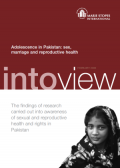
Resource | Publications,
With 158 million people, Pakistan is one of the most populous countries in the world. It is also one of the poorest, with 66% of the total population living on less than US$2 a day (Population Reference Bureau, 2005.). In Pakistan, as in many developing countries, poverty is intrinsically linked with poor sexual and reproductive health (SRH).
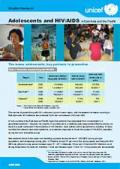
Resource | Publications,
Interventions focused on the most highly vulnerable young people are often said to be the key to slowing or halting the epidemic. However, capacity is clearly inadequate in many countries, and includes an insufficient availability of human and financial resources, as well as a lack of systematic tracking for behavioural trends and risks.
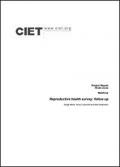
Resource | Publications,
The survey is a follow up to the baseline reproductive health survey of 1999. It provides information for evaluating the five-year Reproductive Health Programme of the Ministry of Health and the Department of Public Health as well as new information about adolescent sexual and reproductive health to guide future programmes aimed at youth.







